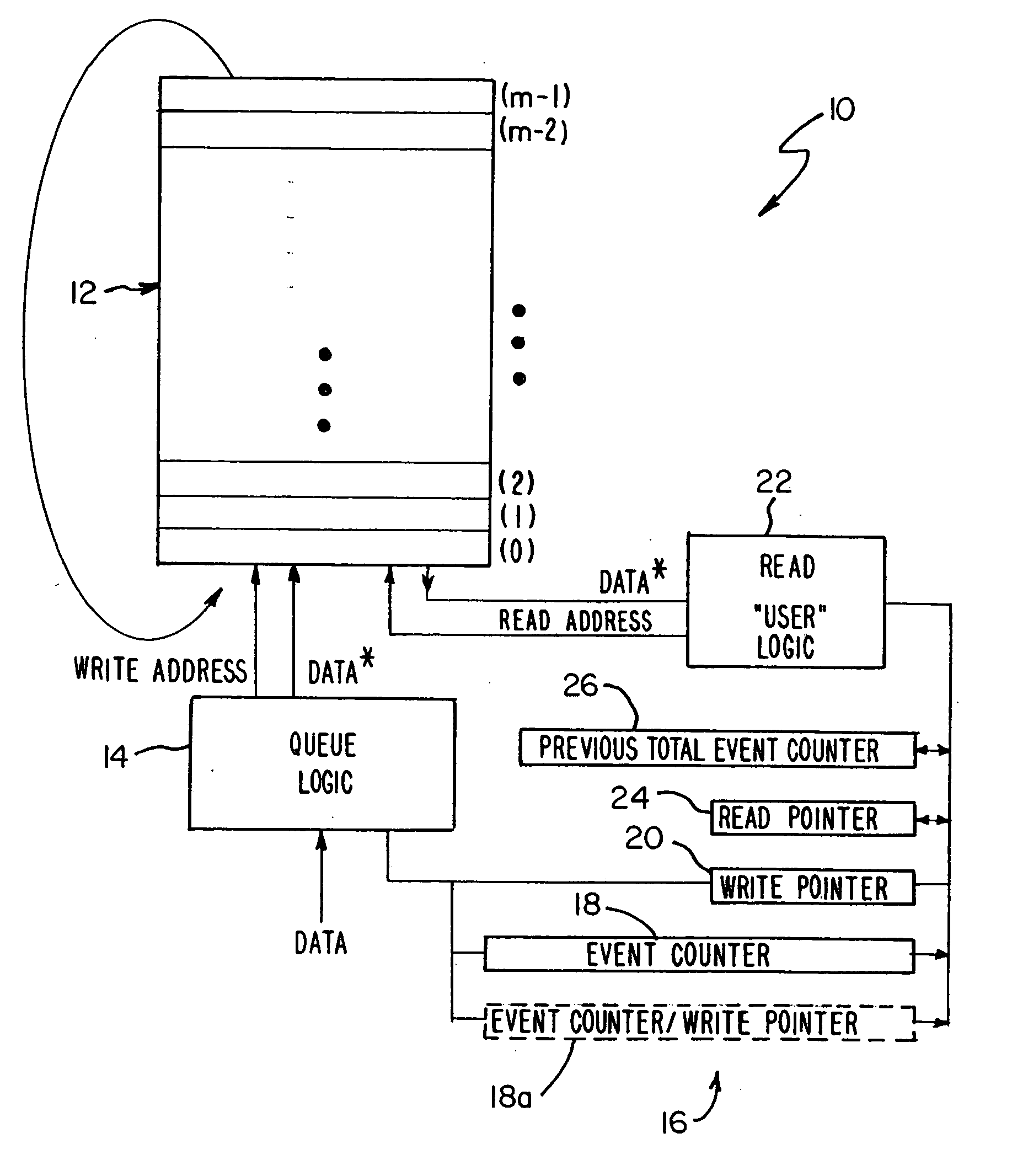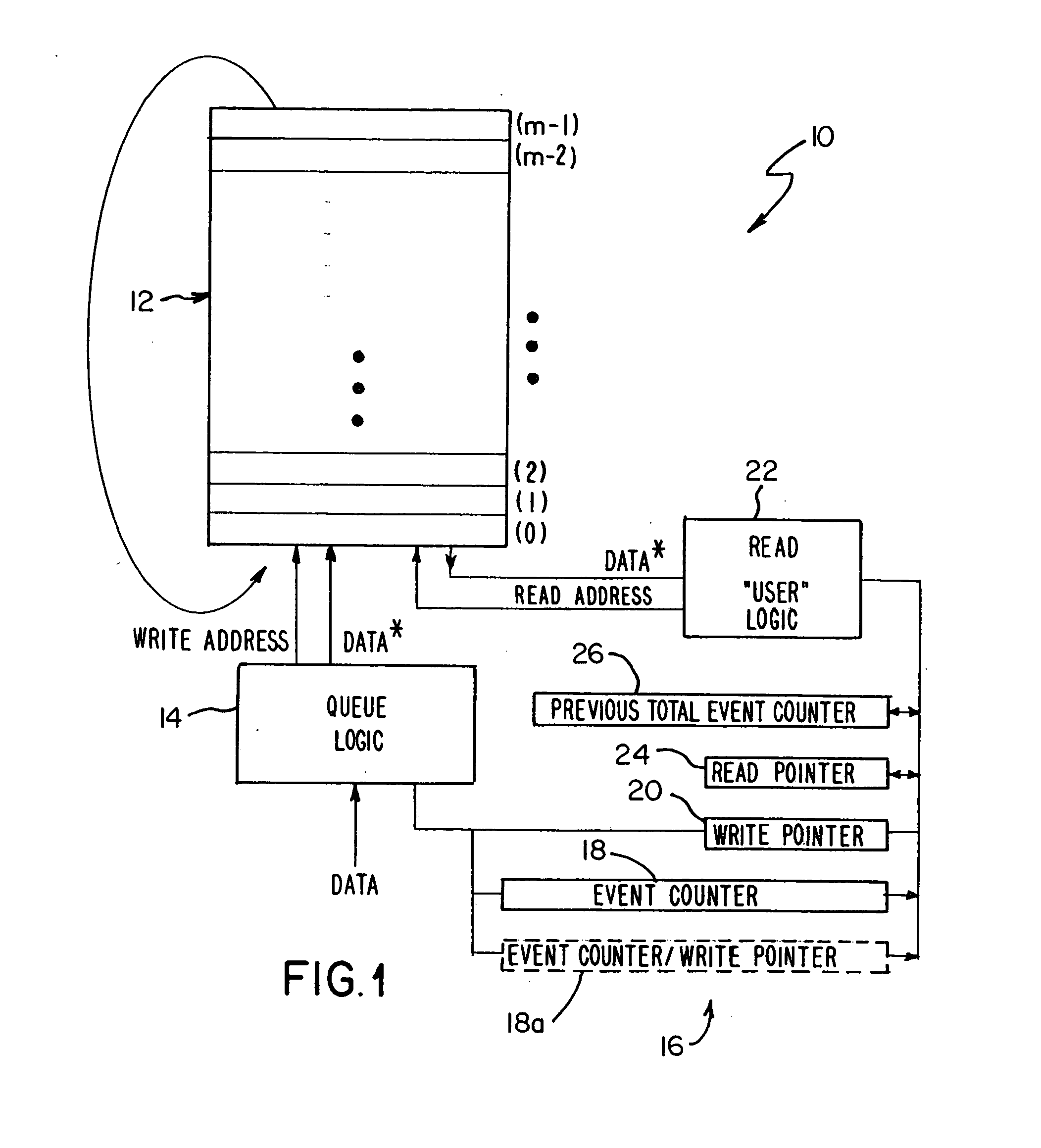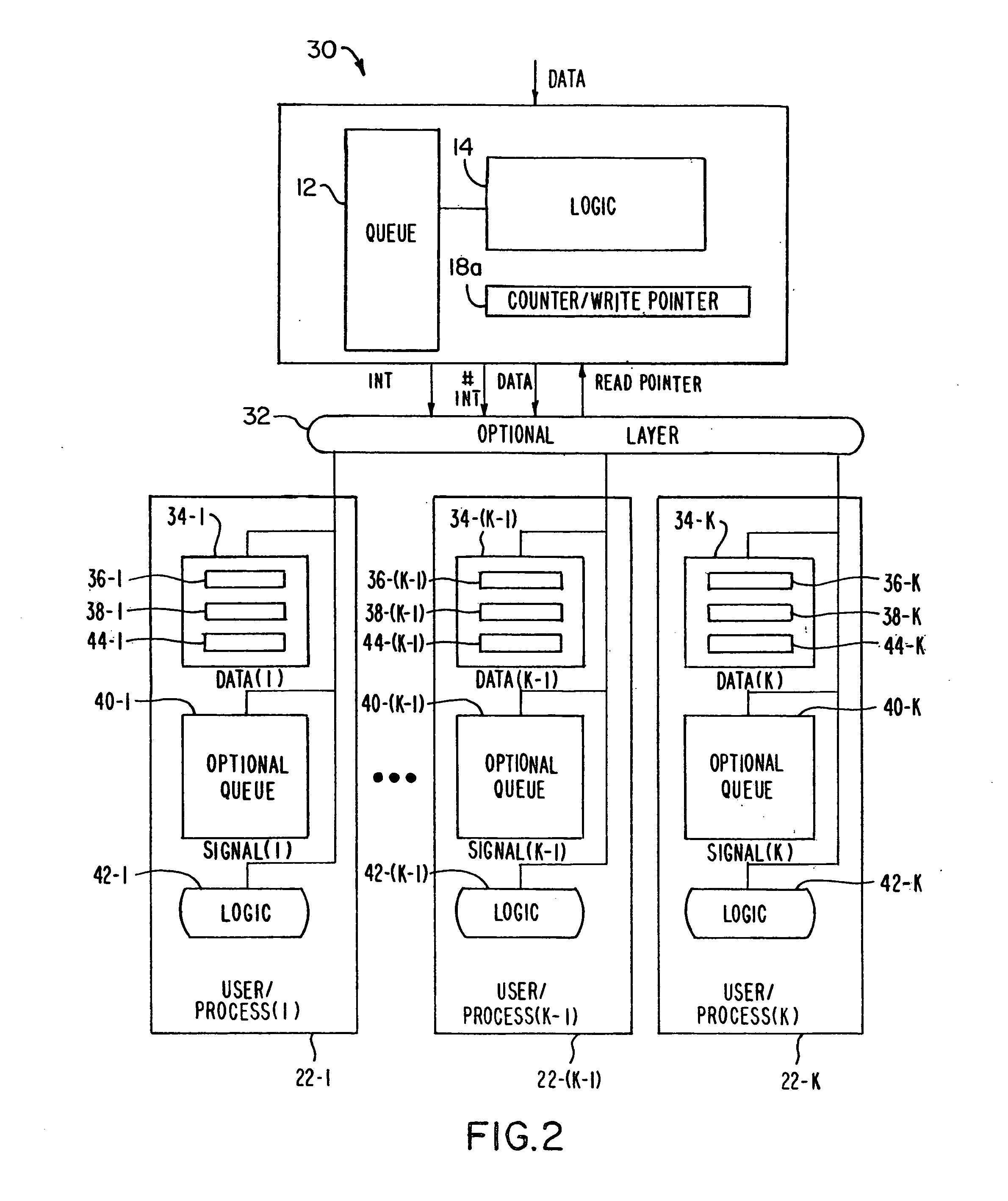Queues for information processing and methods thereof
a technology of information processing and information, applied in the field of information processing queues, can solve the problems of inability to service the incoming information in real time, the receiving process may be too busy with other operations to stop and service the new information, and the fifo is not without significant limitations
- Summary
- Abstract
- Description
- Claims
- Application Information
AI Technical Summary
Benefits of technology
Problems solved by technology
Method used
Image
Examples
Embodiment Construction
[0023] In the following detailed description of the preferred embodiments, reference is made to the accompanying drawings that form a part hereof, and in which is shown by way of illustration, and not by way of limitation, specific preferred embodiments in which the invention may be practiced. It is to be understood that other embodiments may be utilized and that changes may be made without departing from the spirit and scope of the present invention.
System Architecture
[0024] Referring to FIG. 1, a system 10 for queuing information according to an embodiment of the present invention is illustrated. The system 10 comprises generally, a queue 12, queue logic 14, and a set of registers 16 that control access to the queue 12. The term “queue” as used herein is defined broadly to refer to the storage of data, and is not limited to any prescribed manner of storing thereto or reading therefrom. For convenience of discussion herein, the queue is illustrated as an array of sequentially add...
PUM
 Login to View More
Login to View More Abstract
Description
Claims
Application Information
 Login to View More
Login to View More - R&D
- Intellectual Property
- Life Sciences
- Materials
- Tech Scout
- Unparalleled Data Quality
- Higher Quality Content
- 60% Fewer Hallucinations
Browse by: Latest US Patents, China's latest patents, Technical Efficacy Thesaurus, Application Domain, Technology Topic, Popular Technical Reports.
© 2025 PatSnap. All rights reserved.Legal|Privacy policy|Modern Slavery Act Transparency Statement|Sitemap|About US| Contact US: help@patsnap.com



